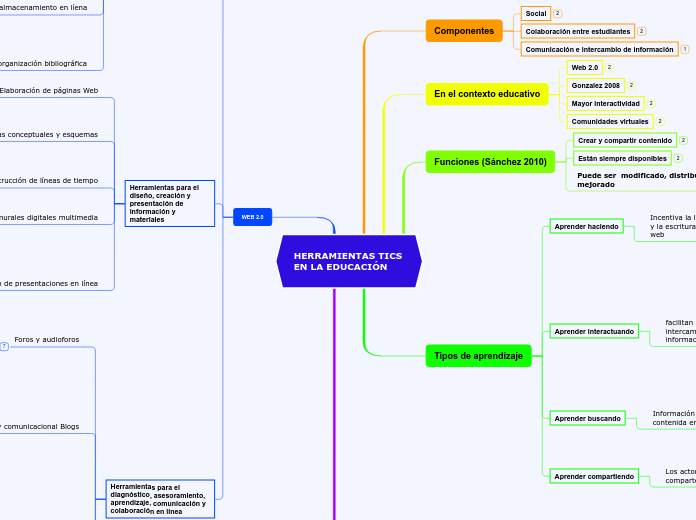von Yesnery Moreno Vor 5 Jahren
173
HERRAMIENTAS TICS EN LA EDUCACIÓN

von Yesnery Moreno Vor 5 Jahren
173

The part of speech is a category to which a word is assigned according to its syntactic functions. In English the main parts of speech are noun, pronoun, adjective, determiner, verb, adverb, preposition, conjunction, and interjection.
A conjunction is a word like 'if' 'but' or 'and' which is used to connect sentences or clauses together.
Coordinating conjunctions always connect phrases, words, and clauses. They are: for, and, nor, but, or, yet, so.
Subordinating conjunctions are conjunctions that are used at the beginning of subordinate clauses. Some examples of these conjunctions are: although, after, before, because, how, if, once, since, so that, until, unless, when etc.
An adverb is used to describe a verb, but it can also describe an adjective or another adverb.
Adverbs normally help paint a fuller picture by describing how something happens.
Snapchat
Ning
Schology
Tweeter
Edmodo
Ofimática en línea
Zoho
Wetpain
Mediawiki
Wikispaces
Wordpress wikis
Videoconferencia
Anymeeting
Google hangout
Voice Thread
Voxopop
Phbb2
Prezi
Scribd
Zentation
Padlet
Glogster
Dipity
Mind meinster
Mind 42
Bubbl us
Wix
Google sites
Weebly
Mendeley
iCloud
Google drive
Onedrive
Droxbox
Anotadores en línea
Anotary
Planificador de reuniones
Scheduleone
Doodle
Calendario de Hotmail
Gogle calendar
Mr. wong
Delicious
Diigo
A pronoun is a word that can be used in place of a noun, typically after the noun itself has already been stated.
A reflexive pronoun ends with ...self or ...selves and refers to another noun or pronoun in the sentence (usually the subject of the sentence). The reflexive pronouns are myself, yourself, herself, himself, itself, ourselves, yourselves, and themselves.
Video cast
Podcast
Procesadores, texto en línea
wikis
Demonstrative pronouns are used to demonstrate (or indicate). This, that, these, and those are all demonstrative pronouns.
Possessive pronouns are used to show possession. The possessive pronouns are mine, yours, his, hers, ours, and theirs.
Google docs
Blogger
Flickr
Subtopic
Youtube
Skype
Messenger
The personal pronouns are I, you, he, she, it, we, they. More often than not (but certainly not always), they replace nouns representing people.
Google Docs
Slideshare
OFFICE
An adjective is a word that's used to describe a specific noun and to provide more detail to the listener.
Superlative adjectives demonstrate a higher level of comparison between entities.
Expresses a comparison between two entities or groups of entities in quality or degree.
A noun is defined as a person, place, thing or idea. Proper nouns always begin with a capital letter. Common nouns, which are general words, such as 'cars,' are not capitalized.
Compound nouns are words where two nouns have been stuck together to make a new noun. Compound nouns should be written as one word, without a hyphen.
A noun which refers to a group of things/people.
Countable nouns are nouns that can be counted, even if the number might be extraordinarily high.
Uncountable nouns are nouns that come in a state or quantity which is impossible to count; liquids are uncountable, as are things which act
like liquids.
Proper nouns are the names of specific people or places. They should always begin with a capital letter.
A verb is an action word or 'doing' word that signifies movement in some way.
A modal is a type of auxiliary (helping) verb that is used to express: ability, possibility, permission or obligation. The main modal verbs in the English language are: can, could, may, might, must, shall, should, will, would.
A linking verb connects the subject with a word that gives information about the subject, such as a condition or relationship.
A verb with its own meaning: a verb that is not an auxiliary verb.